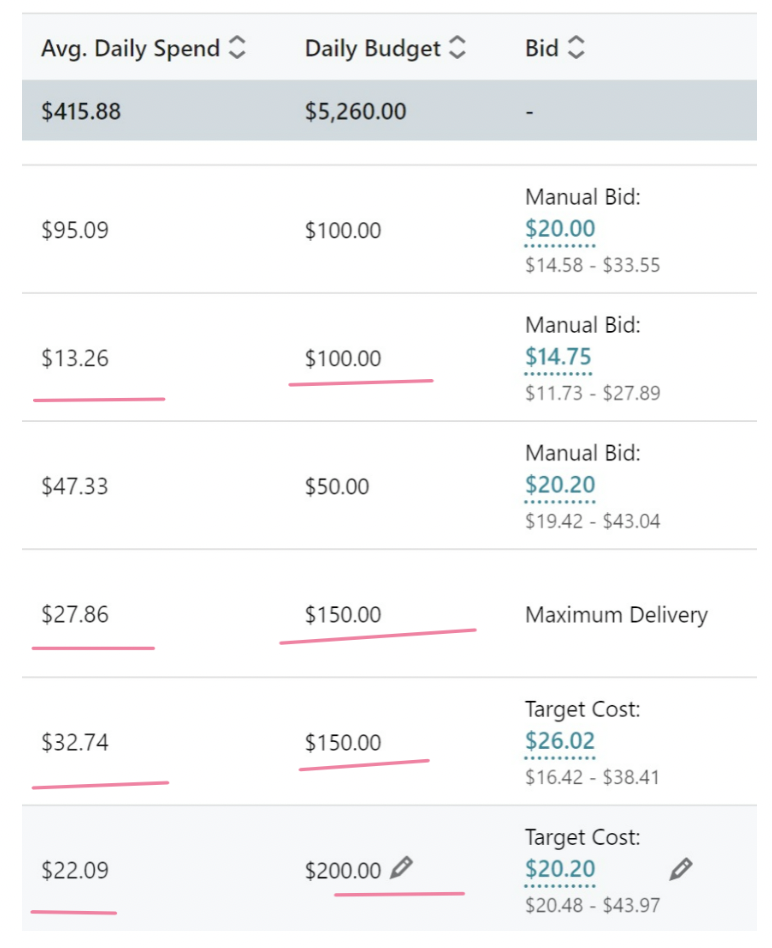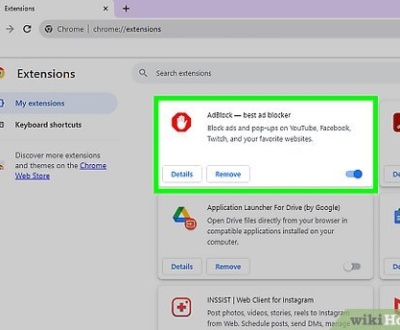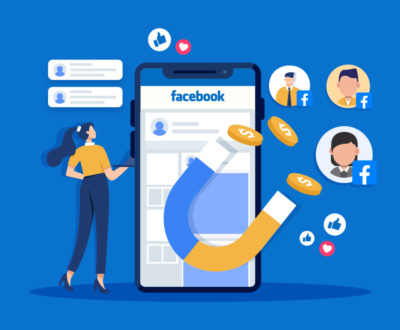The Ultimate Guide to Using LinkedIn Ads Manager
- January 2, 2023
- Digital Marketing, Lead Generation, Linkedin, Sales, Social Media
Looking at using LinkedIn Ads Manager? Great idea!
Want to know…
- Why LinkedIn Ads are worth looking into
- The different LinkedIn ad options at your disposal
- Tips for leveraging the social media platform properly
- What elements make up a successful LinkedIn ad
Got a target audience of professionals? Then they’re likely on LinkedIn.
With more than 830 million members from all corners of the globe, LinkedIn is simply too big a marketing opportunity to ignore.
Since launching back in 2002, the platform has grown from a place to connect and network to one of the most effective social media tools for connecting with your audience.
What’s more, LinkedIn’s advertising options allow you to reach your ideal clients in a way that’s strategically targeted and direct.
But before we dive into the hard topics and I give you the Ultimate guide, lets find out if LinkedIn ads are worth your time.
The first step to creating a successful LinkedIn campaign is to check if the brand you are managing already has an audience on LinkedIn. To do so, simply to go the campaign manager, add relevant targeting (job title, country, industry, org size etc) and see what the available audiences are. Ideally, the audience size is a few 100,000 people. Unless you’re targeting very specific accounts as part of your ABM strategy.
LinkedIn Ads Best Practices
We have compiled a list of best practices that you can use to accomplish your marketing goals. These are practices that have worked for us, yet, we encourage you to experiment and discover whatever works for you and your team.
1. Run brand awareness ads
- A mix of video views, impressions, and website visits.
- Why? – Frequency. These are cheap $$ touchpoints with the audience you target. Repetition + emotion = long term memory
- Tip: <30 sec videos perform better
- Leverage Single Image Engagement & Ads engagement to remarket
2. Run native lead gen forms for content & demo.
- Since LinkedIn has good targeting, there is no point in sending users to a landing page for downloading content.
- Hack: Add job title in case study heading. Ex: Guide to knowledge management vs. CEO’s guide to knowledge management. Create relevant content and increase downloads.
3. Some sweet-spot numbers to bear in mind
- Demo ads – budget at least $200/day, 50,000-200,000 audience size, at least four ad variants seem to be a sweet spot for LinkedIn algorithm
4. Rotate ads evenly vs. Optimize for performance
- If you want to A/B test, rotate ads evenly (option available on ad level) and pass on the metrics to your designer & copywriter as feedback on what worked.
5. While retargeting, intertwine TOFU, MOFU, BOFU
- Do not sequence. This way, anyone who engages with any of your buyer journey ads will be shown the other ads.
- People do not consume content linearly as per the buyer’s journey.
6. Getting Attention on Ad
- People don’t want ads and are generally going to mute them. Customer research -> copy -> design helps create the magic to get attention. Read about absolute and sensory thresholds.
- Noob tip: Use Line breaks and emoticons on copy , Use red for attention, Capitalize on contrast – colours
7. Sell on Intro text, Sell on image text, Sell on the headline, Sell on the description
- Each of these, when read independently, should still give context as the user skims through an ad and might not read everything holistically.
8. Use custom audiences
- Upload target account lists, 1st party contact list, 3rd party lists and intent lists. Lists based on technographic data work great as well. We typically see higher conversions on custom audiences. Also, be sure to use OR conditions to add them into your primary campaign targeting if you are running on a tight budget.
9. Set conversion tracking even for lead-gen campaigns
- Track leads as well as conversions for lead-gen campaigns. CPL lowers further.
10. Some consumer behavior basics
- The ad gets users’ attention only when it makes them cross a sensory threshold.
- Repetition and emotion push information from short-term memory to long-term memory. Customer research is key to evoking emotion.
- Generally, you need 6 to 8 touchpoints before a user takes action.
11. Creative:
- Creative: Use bold colors to stand out against the blue white app.
- Creative with people stands out more than generic but Illustrations also work well
- Use 1200 X 1200 to maximize the real estate on mobile & get 75% higher CTRs
- Now that you know how to set up a campaign fully, it is also essential to check your results to see what is working. We have created a daily checklist we believe you will also find invaluable.
How Much do LinkedIn Ads Cost?
When most people think about social media ads, it is probably Facebook Ads that come to mind. But any social media marketing campaign should be targeted to your intended social audience. And while Facebook may have the most sizeable social media audience, that doesn’t mean that they are the right audience for your product. If you target professionals or business managers, you may enjoy better success from advertising on LinkedIn. But just how much do LinkedIn ads cost, and how do you go about setting up a LinkedIn advertising campaign?
LinkedIn Ad Pricing Models
LinkedIn uses a similar pricing mechanism to Facebook. They sell ads through real-time auctions, where competitors effectively bid on advertising space to reach a particular audience. It’s not overt, like an auction on eBay, but happens behind the scenes using bidding information you provide when you set up your ads.
You can select from three LinkedIn ad pricing models. You will want to pick the pricing model that aligns best with your goals:
- Cost per Click (CPC) – in this case, you pay when people click on your ad – this is ideal when you want to use the ads to drive traffic to a landing page on your website, as you only pay when people take that action
- Cost per Impression (CPM) – here, you pay a certain amount for every 1000 impressions of your ad (M is Latin for 1000). You will usually select this when your goal is brand awareness – people see your ad, but don’t interact with it.
- Cost per Send (CPS) – you would use this model when you pay for sponsored advertisements using LinkedIn’s InMail. You pay for each ad sent to somebody’s inbox.
Of course, you are going to want to ensure that you don’t end up with an unexpected bill from being too successful in the bidding auctions. You can control your ad spending in three ways:
- Setting a total budget – this is the easiest way to ensure that you don’t go over budget. You set an overall budget limit for your campaign. The minimum figure you can select is a $10 budget limit for your campaign
- Setting a daily budget – the advantage of doing this is that you ensure that you spread your budget over the intended length of your campaign. You remove the risk of using up your entire budget on the first day. You can select any amount, but your minimum spending limit must be at least $10 per day per campaign
- Setting a limit on each bid – here, you set your limit as being the maximum amount you are willing to bid for each click or impression. The minimum limit allowed here is $2 for each click or impression. The minimum CPC or CPM bid for Sponsored Content varies depending on the audience you target.
As with any form of contextual advertising, costs can vary greatly depending on demographic targeting, ad creative and ad engagement. We have seen LinkedIn Ad CPC’s range from as low as $2 all the way up to $15. Similarly, CPM (cost per 1000 impressions) can vary greatly from $30 – $200+.
Setting Your Bid and Budget
It is at this point that you decide on your budget and set your bids. Campaign Manager will suggest a range of bids based on current competing bids for your target audience.
Each business has a unique formula for success. It takes time and testing to learn what works. LinkedIn recommends testing with at least $100/day or $5,000 total (generally over a month). Your campaigns have to reach enough people to generate data, so you can evaluate ad performance (based on the objective you set).
LinkedIn suggests a 70/30 split: 70% of your budget on campaigns that drive bottom-funnel conversions or leads, and 30% on campaigns that drive top-funnel awareness or engagement with your content.
Another way to start is with a mix of ad formats to test which types of ads and content yield the best results for your goals.
Troubleshooting Your Campaign Budget
If you find your campaign exhausts its budget too quickly, lower its daily budget.
If your campaign is not spending its budget, set more competitive bids, or use the Automated Bid option: bid one or two dollars above the suggested range to increase the chance of winning the bidding. Automated Bid lets LinkedIn’s system set the Bid for you automatically to get you more results, plus also spend your daily budget in full.
Golden Nuggets for your LinkedIn campaigns
There are many ways to optimize LinkedIn campaigns. However, one of the most useful ones we have found is to go to each of your campaigns in your campaign manager, click on the chart, select demographics, and exclude unrelated audiences to your offer.
Doing so will allow you to spend every dollar better.
After running campaigns for a few weeks, you can optimize the budget based on the amount spent, just like it is shown in the table below.

Note: Be sure you select the correct time range of the campaign so that you get the correct average daily spend
Cost Cap: LinkedIn Recently rolled out Target Cost for campaigns – where you can specify how much a conversion is worth & LinkedIn will try to keep the cost within those parameters. Keep in mind that:
- If your Cost is too low in the auction your ads won’t deliver.
- If your daily spend is not at least 2X the target cost you will limit delivery.
For example, my target cost for a demo is $500 but my daily budget is $200 – the ads won’t be able to deliver demos against your target cost because your bid is too low. This is similar to TCPA or Cost Cap on Google Ads & Facebook Ads

Manual Bidding:
LinkedIn will default to auto bidding to maximize spend vs results. However, if you’re just starting a campaign & want to maximize your spend you can set manual bids. Your manual bids can be at the mid – top end of a given range but lower then your daily budgets. For example, if my manual bid is 30 & my daily spend is 30 – I will likely only end up with a single click a day – not enough impressions & clicks to get meaningful results.
ABM opportunities
When it comes to LinkedIn there are 2 interesting opportunities for ABM or Account Based marketing.

- LinkedIn’s Insights Pixel is extremely powerful in resolving anonymous web visitors to LinkedIn Demographic and company / industry information. In other words, simply by having the LinkedIn pixel installed, you will be able to access insights regarding demographics, job titles, company, industry, etc.
- Targeting specific accounts & contacts on LinkedIn with Custom Audiences is quite useful for marketers. The core difference between LinkedIn and a Facebook custom audience are the accounts. LinkedIn is a company + personal social network, which means you can target companies and contacts (who work at specific companies). Facebook or Adwords, on the other hand, are networks where your targeting is only contact-based. With custom LinkedIn account audiences you can create hyper customized ads and experiences for tier one accounts and provide specific messaging for each account.
- Keep in mind that for ABM opportunities LinkedIn ads can be run using: contact list upload, account list upload and retargeting ads based on website pages.
- For contact list upload – contact name and contact email address are necessary.
- For account list upload – Account name and Account website are necessary.
- Retargeting ads – personalized retargeting ads could be run on LinkedIn based on website urls users visited.
LinkedIn Ads Reporting
Now that you have created, optimized, and run your campaigns, it is equally essential to generate a report that informs the team on how the budget is performing. Although there are no absolute answers for reporting, we think that a piece of weekly information is essential (we are talking about massive budgets) to track everything and ensure it is performing as it should.
We set up our reports on Databox because it simplifies our work. However, we are tool agnostic. In reality, what matters is that you provide your client (internet and/or external) with:
- Spend.
- Conversions.
- Cost per action/acquisition (or whatever the key metric is).
- Pacing.
- Optimization recommendations.
- # of actions (demo/ lead/ signup) within the reporting period.
- Frequency
- Bid vs Spend (Daily) – are you maximizing your daily spend?
Be sure also to ask the appropriate stakeholder the following:
- To check in with sales to understand if converting leads are being closed.
- What % is added to the pipeline?
- What % converts into customers?
- What is a customer worth so you can work backwards and understand what a reasonable CPA is?
And then iterate.
LinkedIn Attribution
One of the most important skills any marketer should develop is the ability to create attribution models. LinkedIn is not an exception. Doing so properly will allow you to understand what is working and what is not.
When setting up your conversions, you can select how each ad interaction is credited for a conversion across multiple campaigns. The attribution model can be set to each campaign or a single campaign.
You can set campaigns attribution as:
- Each campaign: In this model, basically every campaign that had any interaction with the conversion will get credited with a conversion. This is great to understand the touchpoints and how they drive conversions across multiple campaigns – this is more of a multi-touch model
- Last campaign: In this scenario, only the last campaign will get credited with a conversion. This is the Last Touch Model.
Be sure to choose the one that makes more sense to you and that connects with the overall growth goals of the organization. Keep in mind that with ATT the iOS level data may not exactly reflect the results.
The Serial Seller Summary
In LinkedIn Ads, we miss out some of the fundamentals of B2B marketing. Influencers (no, not the TikTok/Instagram influencers) but the ones that can positively influence your B2B Offering. Of course, these champions, believe it or not, play a crucial role in pushing products and services across organizations, and the best of all is that given they are not targeted as often, they might be your secret weapon.
Don’t you think a young associate can pass off a great product for a problem an organization faces during a team meeting?
Help these champions shine; it might be what you are missing from your ad campaigns.
B2B Ads have become so standardized that creativity became a needle in a haystack. We see the same old content downloads, the same offers and CTA’s everywhere. This leads to apathy, being constantly targeted with Ads that are basically the same with different brand names and colour tones.
The good news is, your B2B business can play by different rules. Running thoughtful and deep customer research activities and adding creativity to the mix you can stand out from the pack and break through Ad clutter. Understand what drives value for your business & how your customers buy & align your LinkedIn Ads strategy to that.
If you need help with your LinkedIn Ads, Book a Call with Us Now!
About us and this blog
We are a Full-Service Sales & Marketing provider that aims to help small to medium businesses increase their leads and sales while helping remove the business owners from their day-to-day activities so they can focus more on the long-term goals of their business.
Book a Meeting with us!
We offer Done-For-You Sales, Sales Coaching, and Advisory as well as Digital Marketing Services. If you want to increase the leads generated for your business and need some guidance and accountability, book a call with us now.
Subscribe to our newsletter!
More from our blog
See all postsRecent Posts
- How Do You Stop Google Ads May 9, 2025
- How to Make Money Off Social Media May 5, 2025
- How to Duplicate Page WordPress May 1, 2025









